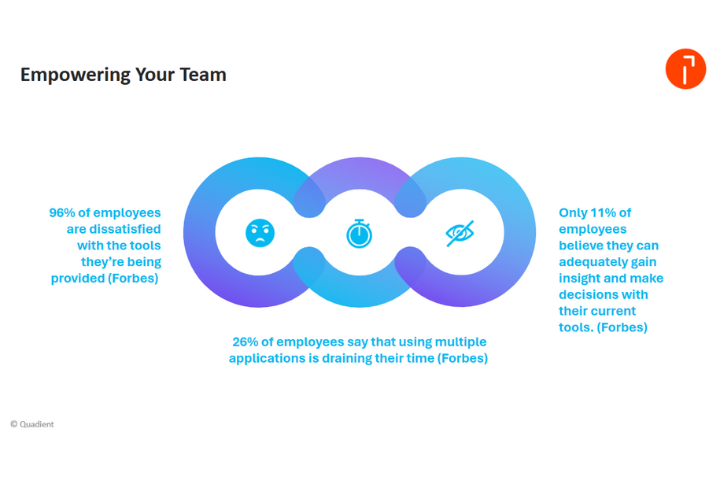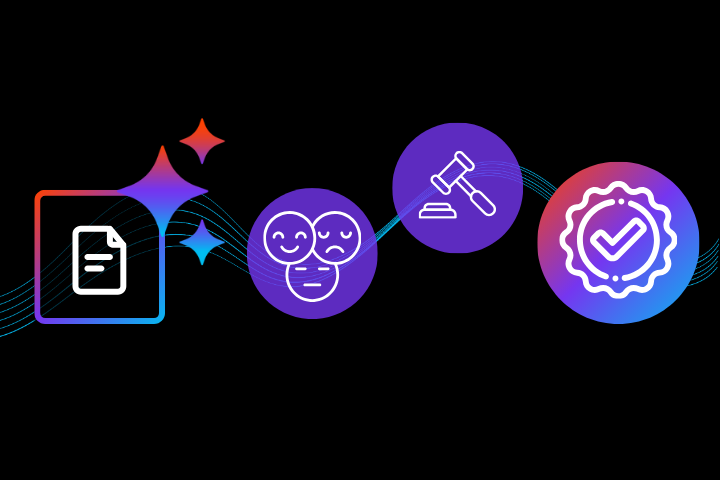
The changing state of software ownership
Long ago, owning software was simple. You asked your IT Operations team to take your sheaf of floppy disks and slowly install whatever you had just purchased onto the company mainframe. In turn, that mainframe was run and maintained by a small team of engineers in a special, climate-controlled room in a purpose-built building.
And everything worked fine until…well, until it didn’t anymore. More modern IT products came to market that required different infrastructure, and huge, hangar-sized buildings were purchased to house new server farms. With different architectures and operational needs, the once small team of engineers slowly grew into an army of experts, covering all sorts of disciplines— from hardware provisioning to software deployment, networking, virtualisation, and performance management.
The two main costs categories of traditionally deployed software
Within the space of a generation or so, the cost of running IT products has changed beyond recognition. What had previously been a license cost and a share of the fixed running costs for the mainframe, suddenly expanded to encompass a whole range of disciplines, all translated through their opaque internal recharge cost centres and inflexible mandatory charges. If you’re currently using a traditionally deployed IT solution, those costs likely fall into two areas:
1. Hardware-related costs
Servers aren’t cheap, but they’re only the beginning when it comes to the cost of modern IT products. They need to be provisioned so that they run properly within your company infrastructure, and then maintained and replaced every few years. The energy required to run the servers themselves equates to around 50% of the total energy cost for the building[1], but all that energy running through the circuit boards also creates large amounts of heat. The cooling costs amount to another 30% of the eight-figure energy bill that most large organisations are likely to be paying.
That number is so high because of the need for redundancy. Managing uptime means being able to handle unforeseen circumstances – either unexpected peaks in demand, or unscheduled downtime caused by a power failure or other major event. While handling a major outage is theoretically simple – you just build another, identical data centre in a different location that runs independently – the costs are enormous. Coupled with the ~€15million[2] spent by large organisations every year on overprovisioning for peaks in demand, and wholesale electricity prices that have increased by over 250% in the last year alone, the bills quickly rack up.
Renting server space through IaaS providers, like AWS or Microsoft Azure, certainly offers a slightly more cost-effective option, but recent increases in rental fees suggest that this may not be the obvious alternative for much longer. And even with the reduced charge for IaaS deployments, the second set of costs still applies.
2. Risk-related costs
Risk-related costs are the necessary evil of traditional IT products. There are lots of types, but they all exist due to one core fact—you need your solution to run (and run quickly) at all times. If it’s not working, there’s going to be a big impact on your business.
As an example, it makes no difference how sensitive your contact centre team is when a distraught, hurricane-affected customer calls to make a claim on their home insurance policy, if you can’t send them the digital forms they need because your Customer Communication Management solution broke 20 minutes ago due to server overload. Your CX breaks down when your tech doesn’t work. Risk management exists to mitigate these types of failures, and is made up of a combination of technology and resource costs.
On the technology side, you’ll need extensive cyber-security capabilities to fend off hackers, as well as monitoring software to ensure that all your servers are up and running, as expected. On the resource side, you’ll need highly skilled human beings to watch the software and act on any changes. Dedicated teams are required to provide 24/7 coverage for uptime and performance monitoring, for both physical and digital security, and for ongoing issues management and resolution. Each of these teams needs to contain the right mix of senior and junior employees to manage career paths and personal expectations of progress, and all of them need to be paid, kept warm and happy, and supported through whatever company benefits you offer.
Well-trained, motivated, and experienced individuals with niche technical skills come at a premium. Your own team may be highly streamlined and cost-efficient, but those mandatory recharges, hidden behind cost center codes, obscure the fact that you’re employing far more people than you may have first thought.
The solution: switching from products to software services (SaaS)
In many cases, defining the problem is easy, but solving it is difficult. Fortunately, in this situation, the answer is relatively straightforward.
Your TCO is associated with the software products you buy—so don’t buy software products. Instead, access software services. Services like SaaS applications, where the hosting, management, and all of the variable running costs are taken care of for you, and replaced by a single, simple, fixed, annual access fee. With SaaS solutions like Inspire Evolve, you are in control of your total cost of ownership, not your IT operations team.
No more painful, mandatory recharges, no more sudden variances in fees being paid to strange internal cost codes that wildly affect your ability to plan, and no more frustration at being unable to influence any of this. With SaaS solutions, the total cost of ownership of your solution is reduced, fixed, and positioned transparently within your annual operational budget, leaving you free to focus on exceeding your business goals, without having to worry about how much more of next year’s budget might get swallowed up for the same return.
To further explore how you can simplify the cost of CCM software ownership, watch our on-demand webinar: Communicating Doesn't Have to be Complex.
[1] https://www.datafoundry.com/blog/estimating-data-center-cost-ownership-5-hidden-costs
[2] https://www.itpro.co.uk/server-storage/data-centres/360196/the-cost-of-overprovisioning







